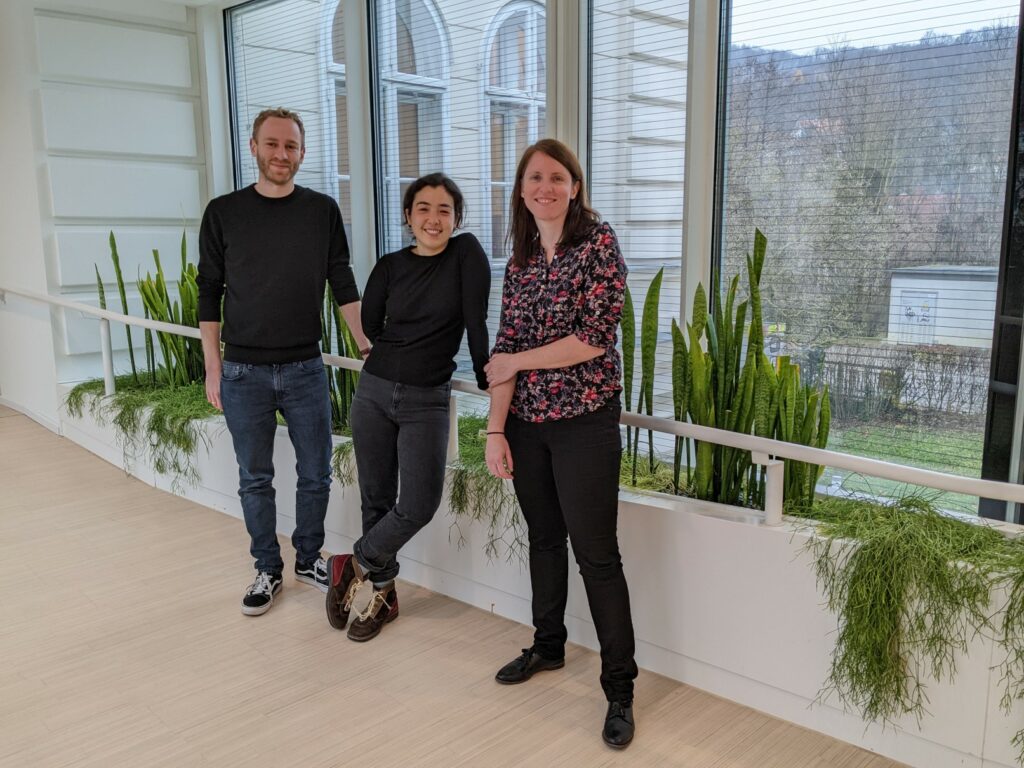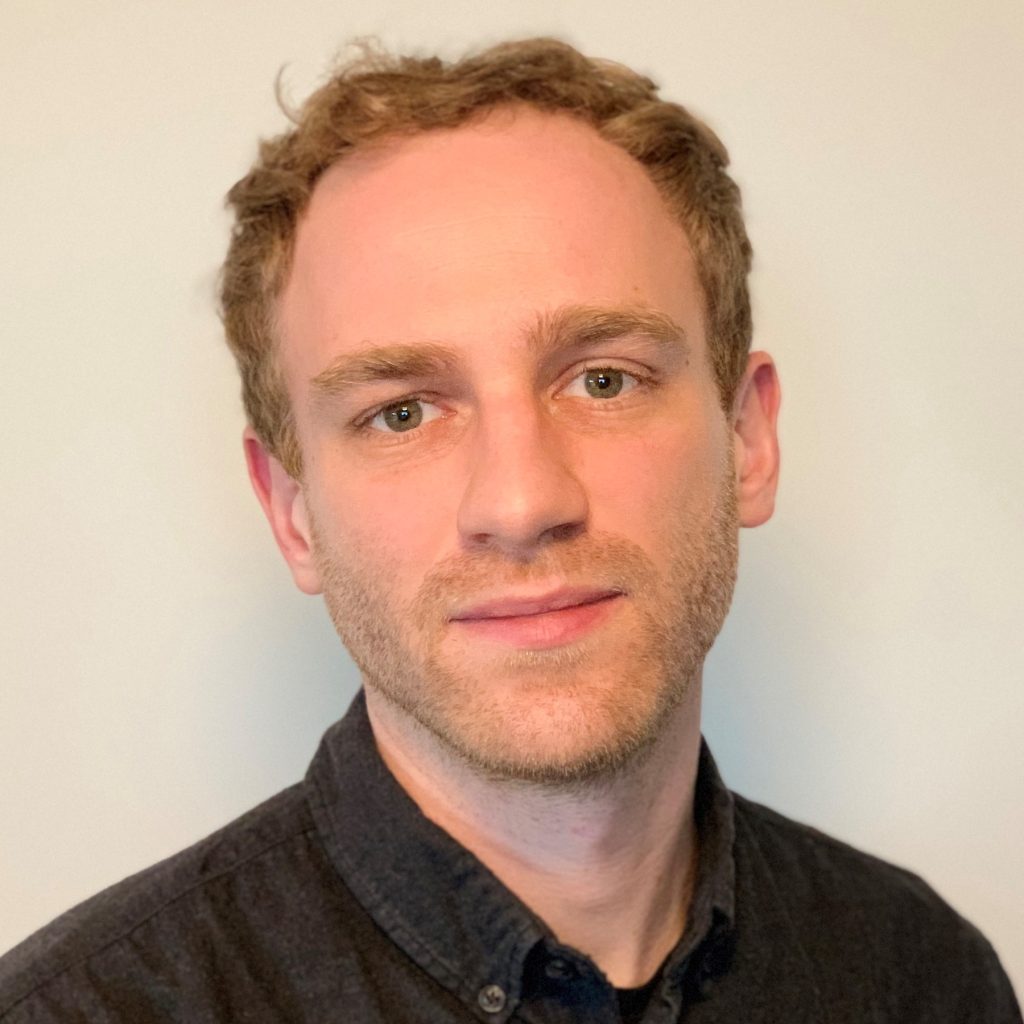This autumn, three new post-doctoral fellows have begun their scientific pursuits at multiple labs at the Institute of Science and Technology Austria (ISTA), raising the count of NOMIS fellows on campus from four to seven. With its characteristic “high risk, high reward” approach, the NOMIS–ISTA Fellowship Program allows for probing at overlooked scientific niches, owing to the wide net of the interdisciplinary cast by each project.
The extended NOMIS-ISTA partnership is now in its third year and the ISTA community is enriched with the joining of Mandy Bethkenhagen, a computational physicist, Felix Frey, a theoretical biophysicist, and Louise Fouqueau, an evolutionary biologist. These scientific labels are working descriptors, but these postdocs are a lot more than that. Each of them brings with them the promise of fostering cross-disciplinary research – one of ISTA’s flagship commitments as well as the hallmark of the NOMIS fellowship. Fittingly, the work the three new fellows are setting out to do finds a natural home at ISTA, which boasts its lack of formal departments and wealth of scientific work conducted via multifaceted collaborations between labs and top-notch scientific services.
Felix Frey was the first one to begin this year in September 2022, while Louise Fouqueau and Mandy Bethkenhagen both followed in November.

Unique membranes
As all NOMIS fellows are encouraged to, Frey’s work will be part of two research groups on campus: Computational Soft and Living Matter lab led by biophysicist Andela Saric and Martin Loose, an experimental biologist leading the Self-Organization of Protein Systems lab. Felix Frey’s investigations on how plasma membranes become deformed during various biological processes with a crucial focus on the Archaea group of organisms will also include collaborations with Buzz Baum’s lab at the University of Cambridge in the United Kingdom.
Archaea are a group of single-celled organisms that are neither prokaryotes nor eukaryotes. They often dwell in extreme conditions of high temperatures, low pressures, and highly acidic environments where life is hard to find. Not much is known about how they survive extreme conditions, but scientists guess that their unique monolayered plasma membranes compared to bilayered membranes seen in prokaryotes and eukaryotes, has something to do with it. “A different type of membrane, a different molecular layer opens up the possibility to grasp at the new types of membrane dynamics that are currently unknown,” Frey says.
“Prokaryotic/Eukaryotic bilayer membranes are more fluid, whereas, in Archaea, they are more sturdy and rigid. As a physicist, I am interested in this new material,’’ Frey says. There is also an evolutionary question in his work. Eukaryotes emerged from a common ancestor between Prokaryotes and Archaea. These organisms lived some four billion years ago, and are called the Last Universal Common Ancestor or LUCA cells. ‘What was the mechanism in these cells?’ is one among many of Frey’s questions. He aims to develop the first model of how the reshaping of Archaea membranes takes place and contrast it to the bilayer model seen in eukaryotes and prokaryotes.
To address each of the intersectionalities such work requires, various opportunities are at hand at ISTA. Saric lab offers Felix an important method to study membranes that he hasn’t used before during his postdoc at TU Delft nor during his PhD at Heidelberg University. In the lab’s computation work, membranes are studied in a unique way: by rendering them to something the scientists like to call the ‘bead and spring model’. This is what Frey aims to employ in his study of the monolayer membranes of Archaea. “There is a tradition of using these models for bilayer membranes. Using it to study monolayers is relatively new. I really want to learn and apply this model at the Saric lab as it has an enormous resolution. There is much biophysics to grasp at,” Frey says.
At Martin Loose’s lab, synthetic membranes are reconstituted, which serve as simplified and workable experimental platforms for questions such as Frey’s. Along with this, he hopes to work with his cell biology collaborators at Cambridge University, who have been looking at Archaea extremophiles like Sulfolobus Acidocaldarius.
“The coming together of many disciplines and approaches in my work mean that physics can explain how biology works with different materials and different mechanisms. This is really exciting! I have already had scientifically stimulating experiences in my first few months at ISTA,” Frey adds.
Inside ice giants
Mandy Bethkenhagen also studies materials, but a kind that is more astronomical than biological. Her subject matter is warm dense matter under the pressure of around a million atmospheres and temperatures of several thousand degrees. Such materials are found inside planets and stars. Recently, as a Marie Skłodowska-Curie Fellow at ENS Lyon, Bethkenhagen has virtually investigated rock mixtures in the ice giants of our planetary system – Uranus and Neptune. Some of this work including papers on the fascinating question: ‘Is there diamond rain on Uranus and Neptune?’ was a collaboration with Bingqing Cheng, who leads the Computational Materials Science lab at ISTA. With the NOMIS fellowship at ISTA, Bethkenhagen has now joined Cheng’s research group and together, they are set to shift focus on the chemical reactions taking place in exoplanets.
Observational astronomy in the last decades has yielded over 5,000 confirmed planets among 3,800 planetary systems in our galactic neighborhood. Around 500 candidates of these are earth-like and/or water-rich. In exoplanet research, the focus in general has now shifted from simply finding exoplanets to characterizing them. Bethkenhagen’s upcoming work has a part to play in that. She will work with atomistic simulations of chemical reactions happening in high-pressure high-temperature conditions found on exoplanets. For this work, she plans to continue her use of Density Functional Theory: a method derived from quantum physics to reduce the many-body problem effectively to a one-electron equation, which will be combined with Machine Learning Potentials that Cheng’s lab is adept in. “This approach will help to increase the scale of the simulations to a size where studying the thermodynamics of such materials under high pressure becomes more accessible,” Bethkenhagen says.
Bethkenhagen wishes to calculate different phases atoms and molecules might form in such conditions inside exoplanets, so she is able to add to astronomy by making claims such as: “This planet has a core and this one doesn’t” and/or “this one is water-rich.” In this way, she hopes to help develop planetary models of observed exoplanets. “If this work pushes for a space mission to our own Solar System’s ice giants Uranus and Neptune, which we haven’t directly observed since the Voyager fly-bys in the late 80s – that will be great!” says a hopeful Bethkenhagen.
It is often said in the field of astrobiology: ‘follow the water’. It is this same motivation that brings Bethkenhagen to her second lab at ISTA: the Atmosphere and Ocean Dynamics led by Caroline Muller. In her aim to contribute to the broader question of why life formed on Earth and not on other Solar System planets, Muller’s expertise on the best-studied watery planet brings an Earth Science angle to Mandy Bethkenhagen’s work. “Muller studies dynamics of atmosphere and oceans. We have as yet, only looked at the interior of planets but would like to work with Muller to guide the project on climate modelling and see how the atmosphere of planets informs our questions.” For example, Bethkenhagen would like to characterize heat flow on planets with Muller.
“My research lies between Physics, Earth Science, and Computer Science. And such a bridging seems to fit perfectly with ISTA and NOMIS ethos. This is a very exciting prospect for me, besides the fact that I now work with two women PIs,” she says.
Adaption through selfing
Louise Fouqueau joins the Evolutionary Genetics group at ISTA led by Nicholas Barton to investigate the interplay between reproductive systems and species’ adaptive capacity.
At ISTA, with the NOMIS fellowship, Fouqueau will extend her PhD work on reproduction systems that she pursued while working with scientists at the 150-year-old coastal Station biologique de Roscoff in Brittany – a hub for marine biology.
This time with a focus on plants, specifically Arabidopsis lyrata. “A. lyrata is a self-incompatible species. Individuals are hermaphrodites, but do not self-fertilize in most populations. However, at the geographical limit of the North American range distribution, they suddenly become self-compatible and have a very high rate of selfing,” Fouqueau explains. The plants offer her the possibility to develop theoretical models for the conditions in which selfing evolves and, once it evolves, what are its consequences on the adaptive potential of the population and whether they can easily expand into other geographies.
Fouqueau brings with her a background in engineering and evolutionary studies that she pursued at an agronomical institute and the University of Montpellier, in France. Most recently, she completed her PhD on species adaptation, with a special focus on populations found at the limit of the range distribution. “Marginal populations are especially important in the face of climate change. In the Northern Hemisphere, species are known to be moving to the north – creating a geographic south limit and a north limit. Populations at both these limits face challenges,” she says.
The good mix of mathematicians, biologists, and theoreticians at Nick’s lab was one of Fouqueau’s motivations to pursue the NOMIS fellowship at ISTA. Along with theoretical biology to be pursued at Barton’s lab, Fouqueau will also pursue data analyses at Yvonne Willi’s lab at the University of Basel.
“When we rely only on data analyses, often we forget that these paradigms are based on theoretical models that we are not critical about. Reciprocally, when doing theory, I think it is important to keep in mind what’s really going on in the field. Therefore, it is important for me to do both at the same time”, Fouqueau explains her approach to interdisciplinarity.
The outcomes of the multifaceted scientific work that these postdocs are embarking upon promise scientific results with the potential to further our understanding above and beyond fossilized scientific disciplines. As is the vision of the NOMIS Foundation, the fellows now hold the key to asking bold questions.
This story was originally published by ISTA: Three new NOMIS Fellows join ISTA





